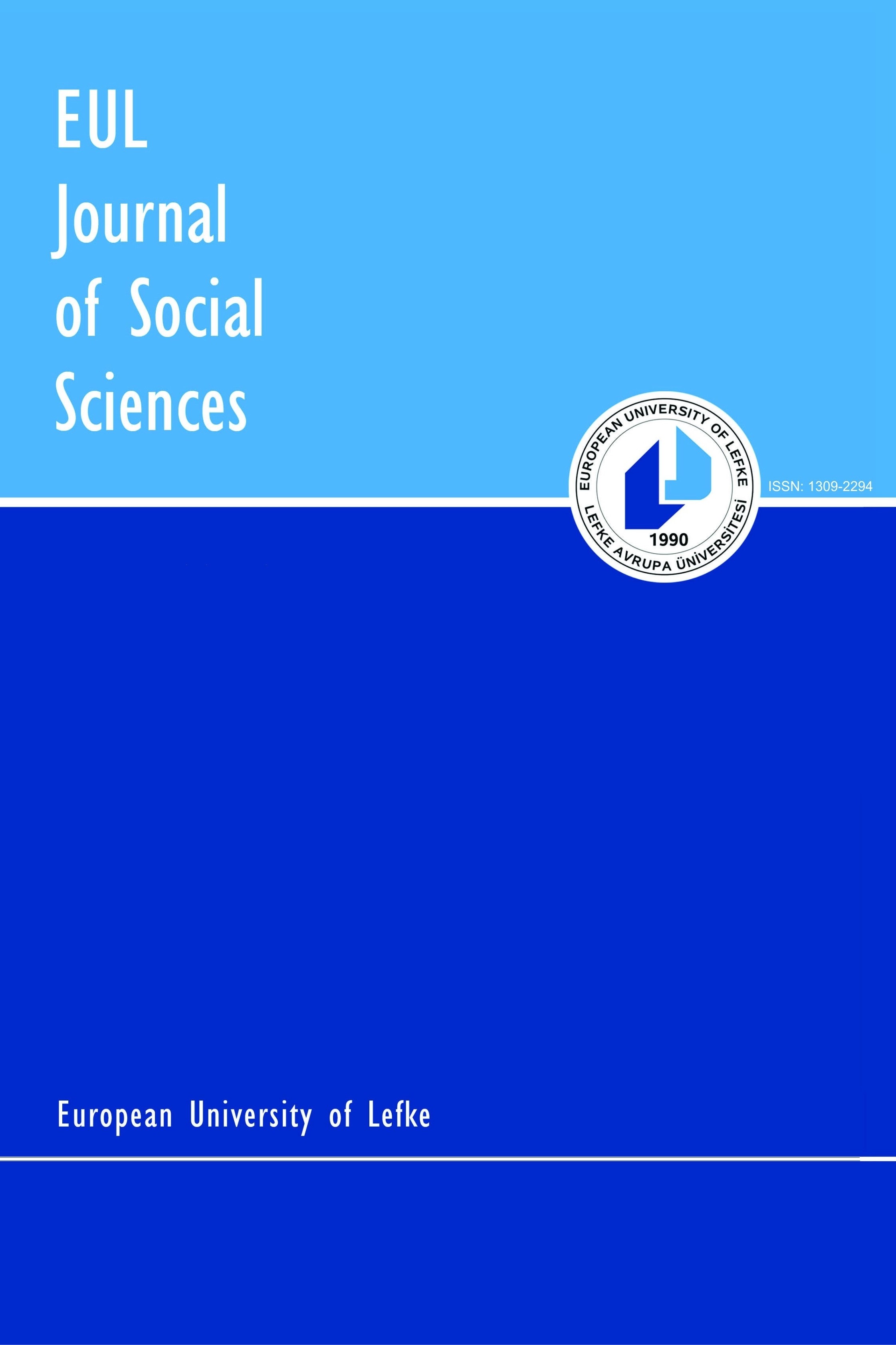USING PLS-SEM TECHNIQUE IN ASSESSING INTEGRATED SUSTAINABLE WASTE MANAGEMENT FRAMEWORK IN ABUJA, NIGERIA
USING PLS-SEM TECHNIQUE IN ASSESSING INTEGRATED SUSTAINABLE WASTE MANAGEMENT FRAMEWORK IN ABUJA, NIGERIA
reuse, reduce, solid waste,
___
- Akter, S., D’Ambra, J. & Ray, P. (2011). “Trustworthiness in Health Information Services: An Assessment of a Hierarchical Model with Mediating and Moderating Effects using Partial Least Squares (PLS)”, Journal of the AmericanSociety for Information Science andtechnology, 62(1): 100-116. Awomeso, J. A., Taiwo, A. M., Gbadebo, A. M., & Arimoro, A. O. (2010). “Waste disposal and pollution management in urban areas: a workable remedy for the environment in developing countries”, American Journal of Environmental Sciences, 6(1): 26-32.
- Brito, J., & Saikia, N. (2013). Recycled aggregate in concrete, green energy and technology. London: Springer-Verlag. doi, 10: 978-1.
- Chin, W. W. (1998). Commentary: Issues and Opinion on Structural Equation Modeling. MIS Quarterly, 22: 7-16.
- Chin, W. W. (2010). How to write up and report PLS analyses, in Handbook of Partial Least Squares: Concepts, Methods and Application. Esposito Vinzi, V.; Chin, W.W.; Henseler, J.; Wang, H. (Eds.), Springer, Germany, 645-689.
- Cohen, L., Manion, L. And Morrison, K. (2007), Research Methods in Education Sixth edition ROUTLEDGE, Taylor & Francis Group.
- Davidson, G. (2011). “Waste Management Practices”. Retrieved on January 10,2015 from http://www.dal.ca/content/dam/dalhousie/pdf/sustainability/Waste%20 Management%20Literature%20Review%20Final%20June%202011%20(1.49%20MB), Retrieved: 10.6.2021. de Campos, V. A. F., Silva, V. B., Cardoso, J. S., Brito, P. S., Tuna, C. E., & Silveira, J. L. (2021). A review of waste management in Brazil and Portugal: Waste-to-energy as pathway for sustainable development. Renewable Energy.
- EEA (2017). “Waste recycling. Denmark: European Environment Agency (EEA)” Available: https://www.eea.europa.eu/data‐and‐maps/indica-tors/waste‐recycling‐1/assessment, Retreived: 10.6.2021. Esin, T, Cosgun, N. (2007). “A study conducted to reduce construction waste generation in Turkey”, Building and Environment, 42(4): 1667-1674.
- Ezeah, C., & Roberts, C. L. (2012). Analysis of barriers and success factors affecting the adoption of sustainable management of municipal solid waste in Nigeria. Journal of environmental management, 103, 9-14. Geisser, S. (1974). “A predictive approach to the random effect model. Biometrika”, 61: 101-107. Gören, S. (2015). “Sustainable waste management”. In Handbook of research on developing sustainable value in economics, finance, and marketing (pp. 141-156). IGI Global.
- Hanssell, S., Wong, A., Houser, A., Knopman, D., & Bernstein, M. (2003). Building Better Homes: Goverment Strategies for promoting Innovation in Housing. Santa Monica: US Department of Housing and Urban Developement (HUD), Office of Policy Developement and Reearch and the Partners for Advancing Technology in Housing (PATH).
- Hair, J. F., Black, W. C., Babin, B. J., & Anderson, R. E. (2010). Multivariate Data Analysis: A Global Perspective (Seventh Edition ed.). Upper Saddle River, New Jersey: Person Education Inc.
- Hair, J., Celsi, M., Money, A., Samouel, P., & Page, M. (2011). Essentials of business research methods (2nd edition ed.): ME Sharpe Inc.
- Hair, J. F., Sarstedt, M., Ringle, C. M., & Mena, J. A. (2012). “An assessment of the use of partial least squares structural equation modeling in marketing research”, Journal of the Academy of Marketing Science, 40: 414-433.
- ISSN: 1309-2294
- Yayın Aralığı: Yılda 2 Sayı
- Başlangıç: 2010
- Yayıncı: Lefke Avrupa Üniversitesi
BATI TRAKYA MÜSLÜMAN-TÜRK AZINLIĞININ ULUSLARARASI HUKUKTAN DOĞAN EĞİTİM HAKLARI
BANK TRUST AMONG UNIVERSITY STUDENTS IN UZBEKISTAN
EXPLAINING THE ADOPTION OF EV POLICIES IN OIL-RICH COUNTRIES
Yedidia Owusu ACHIAW, Direnç KANOL
SAĞLIKLI AİLE ÖLÇEĞİ: KISA VE UZUN FORMUNUN TÜRKÇE’YE UYARLANMASI
Azmi ÇAĞLAR, Yusuf AKYIL, Yakup İME
Adekunle Sunday ADEOGUN, Yusuf NASIDI, Olalekan Tolulope B., ADULOJU
1974-2017 ARASI KUZEY KIBRIS TÜRK CUMHURİYETİ’NİN SİYASİ HAYATI
THE PSYCHOANALYTIC ROOTS OF HOARDING BEHAVIOR: A REVIEW OF THE LITERATURE
